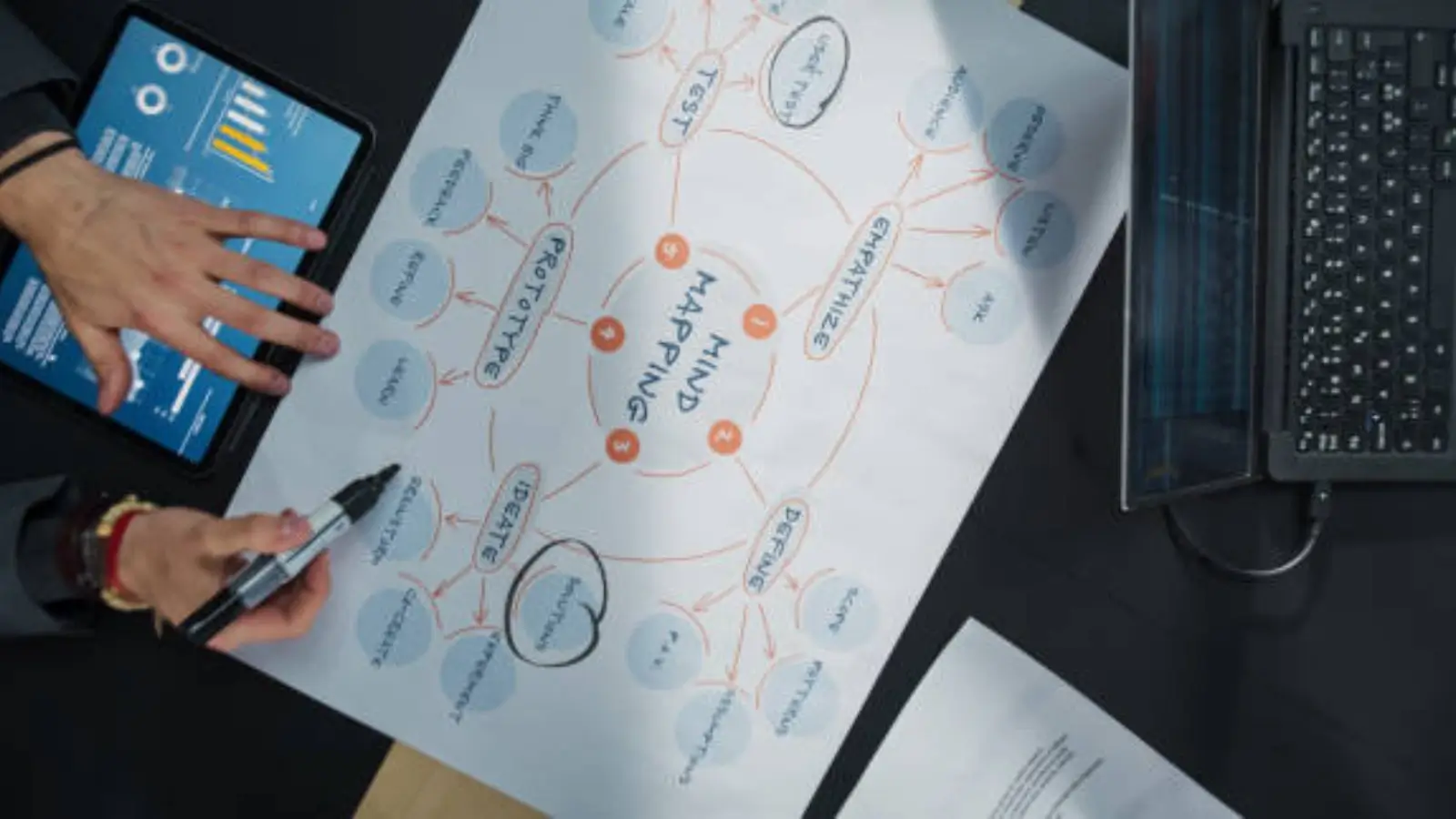People process information differently, and generating new ideas is often a challenge. For instance, if you put a blank in front of your team and prompt them to come up with awesome ideas, there will likely be frustration.
It’s terrifying to plunge into a fully formed, innovative concept. This is where mind mapping comes in. Mind maps will help ease the intimidation factor and get you and your team organized.
So, whether you’re brainstorming ideas, trying to develop plans for the big picture, or want to turn on creative juices, mind mapping is the best place to set you off.
Continue reading to find out precisely what mind mapping is and a step-by-step tutorial for organizing ideas using this technique.
What is Mind Mapping?
Mind mapping is a creative technique of visualizing the ideas you’ve been brainstorming in a diagram to enhance your efficiency and comprehension. You’ll have rambling topics arising from a central idea and connect them to the main concept using connectors, branches, or twigs.
Mind mapping helps you create diagrams so you can organize your thoughts in a visual way. What you create are mind maps, also called spider diagrams, which have been proven to boost productivity, creativity, and memory.
In addition to their distinctive structure, mind maps usually allow you to incorporate colors, images, and keywords so you can make the information more engaging and easier to recall. This visual approach aligns with the brain’s intrinsic way of connecting ideas, making it easier to pick patterns and establish relationships.
Moreover, mind maps are versatile, and you can use them to brainstorm, plan, take notes, solve problems, and study. Whether you create them by hand or using digital whiteboarding tools, mind maps will help you break down complex topics into manageable parts.
Step-by-Step Mind Mapping Tutorial
Now that you know what mind mapping is, the following mind map tutorial outlines seven steps you can follow to create an effective mind map.
1. Begin with Your Central Topic
At the center of your workspace, add the main idea you’re exploring. You can go with a single word, a short phrase, or a central image. Try to write that idea as simply as you can, then draw a circle around it.
If you choose to go with an image, create a colorful picture in the center of a blank workspace to represent your main subject or theme of the mind map. Use at least three colors so you can focus your mind, attract attention, and stimulate associations.
For example, suppose you’re working on a new product, you can add an image from a competitor whose work you regard highly and want to outperform. Then, proceed to add a few short phrases or words to describe your objective.
2. Branch out Your Subtopics
Next, determine subtopics and minor themes related to your central concept. It’s recommended to start with three to five of these. These are the main branches for your map.
Encircle your central concept, surround it with these subtopics, and draw lines connecting each subtopic to your primary idea. Finally, draw a circle around each subject.
However, keep in mind that these ideas do not have to be fully developed or refined; they’re just associations that you’ll build off of later and develop further.
3. Label the Branches Using Key Words
Add keywords to every main branch to express your topics more powerfully and concisely. For example, each main branch of your product development mind map might represent key product features that you want.
Preferably, ensure the word, phrase, or image you use is the same length as the branch it sits on. You do not want to leave an empty length at the end of a branch because it can disconnect the flow of your thought process.
4. Connect the Sub-topic Branches
Draw lines off the end of the main branches, but make these lines thinner. The lines will represent your subtopics and supporting details, and will help you flow naturally from the main topics.
Proceed to branch out with more minor branches that progressively thin out to add more information and links as you see appropriate.
5. Incorporate Visuals, Symbols, and Colors Wherever Possible
Integrate images generously across your mind map to make it more visually stimulating and memorable.
Whenever you can, use visuals in place of words on branches to better illustrate ideas and leave a lasting mental impression. Even if you're not confident in your drawing skills, you can still create visual interest by using simple patterns, shapes, or stylized lettering.
Symbols, icons, and varied colors can also be used strategically to represent themes, categorize information, or add emotional or conceptual emphasis, making the map easier to interpret at a glance.
6. Indicate Connections Across Different Parts of the Map
After laying out all your ideas, the whole structure of your mind map allows for easier detection of meaningful links and recurring themes between various concepts.
Highlight these connections by drawing arrows or lines that bridge related branches, helping to form a cohesive narrative across your map.
These visual cues act as guides, leading the viewer's eye from one idea to another and encouraging a more fluid and connected understanding of the overall content.
7. Emphasize Key Concepts
Use visual tools like outlines, shaded regions, or cloud shapes to draw attention to key ideas and central topics. This approach not only makes essential information pop off the page but also improves recall when reviewing or presenting the map.
Since short-term memory typically holds a limited number of items—often cited as around seven—grouping related details into clusters, or "chunks," can help optimize memory retention.
Enclose key branches and their sub-branches within shapes or backgrounds in contrasting colors to create distinct visual zones within the map, making your structure more organized and cognitively accessible.
Final Thoughts
Mind mapping is much more than just a note-taking or brainstorming method—it's a dynamic, visual thinking tool that empowers individuals and teams to capture, structure, and explore ideas better. By starting with a central concept and radiating outward through branches, sub-branches, and visual elements, mind maps mirror the brain's natural way of organizing thoughts. This makes them incredibly effective for enhancing creativity, improving memory, and simplifying complex problems.
The step-by-step tutorial outlined above offers a practical framework for building your mind maps, whether you're developing a new project, studying a topic, or collaborating on a strategy. From identifying a central idea to using colors, symbols, and connections to enhance comprehension, each stage helps turn a blank page into a rich landscape of ideas.

















